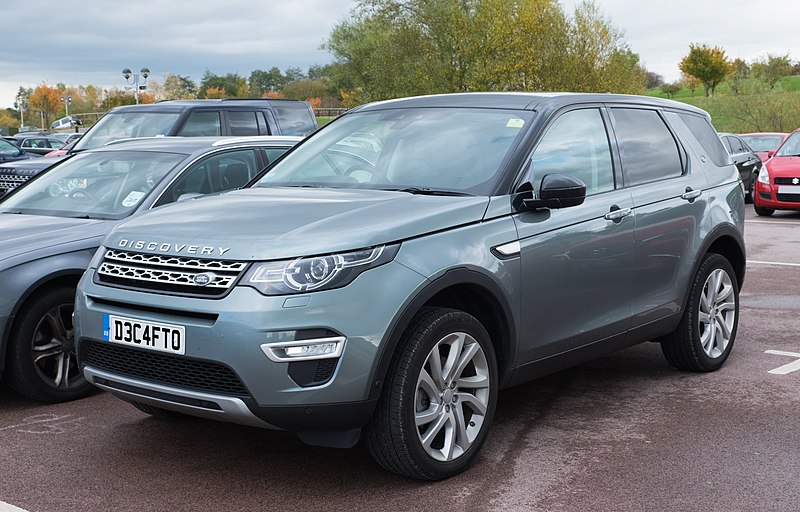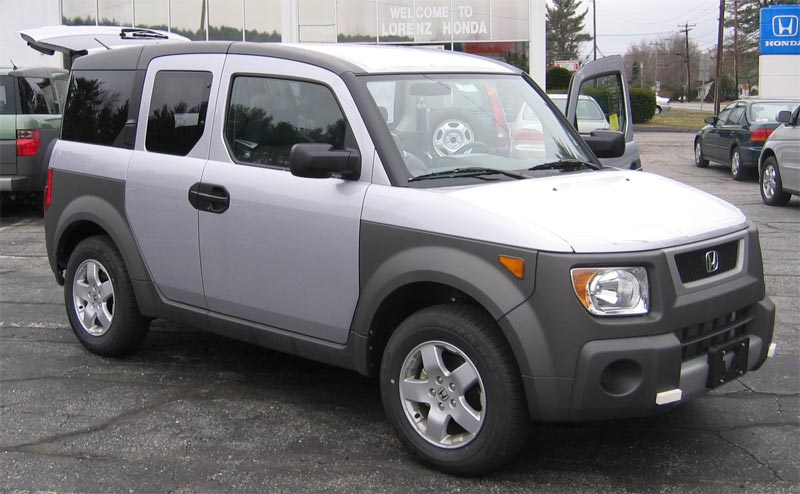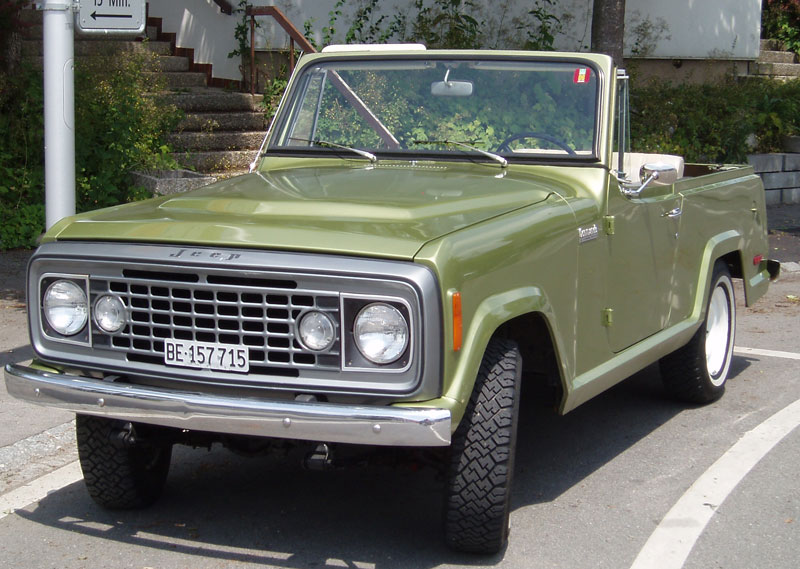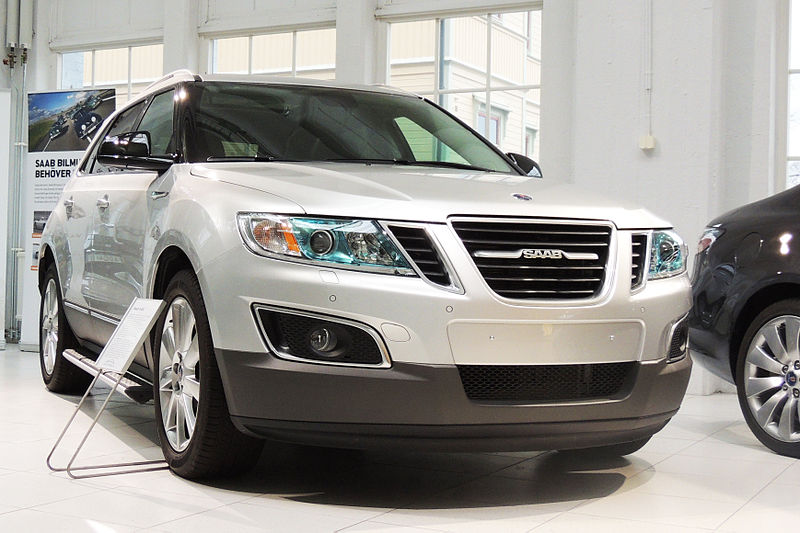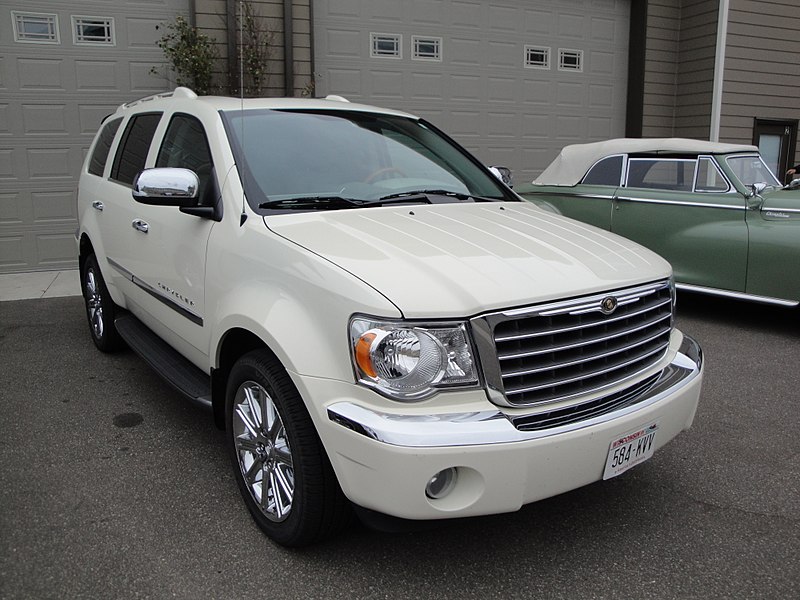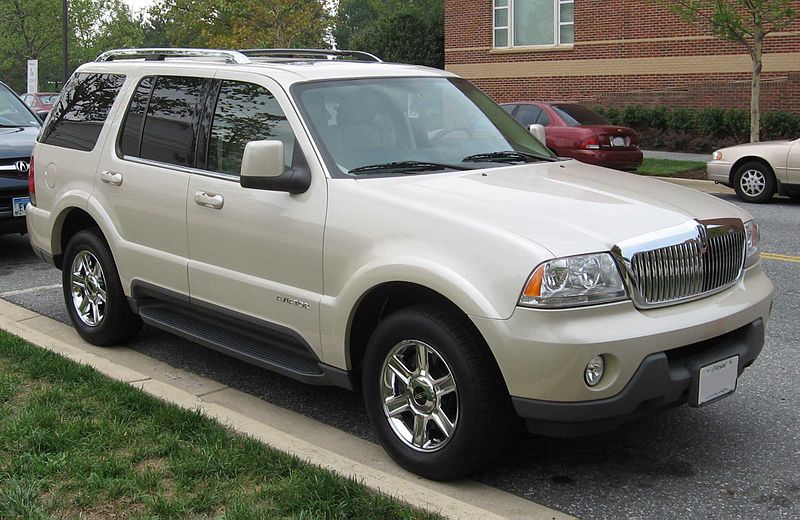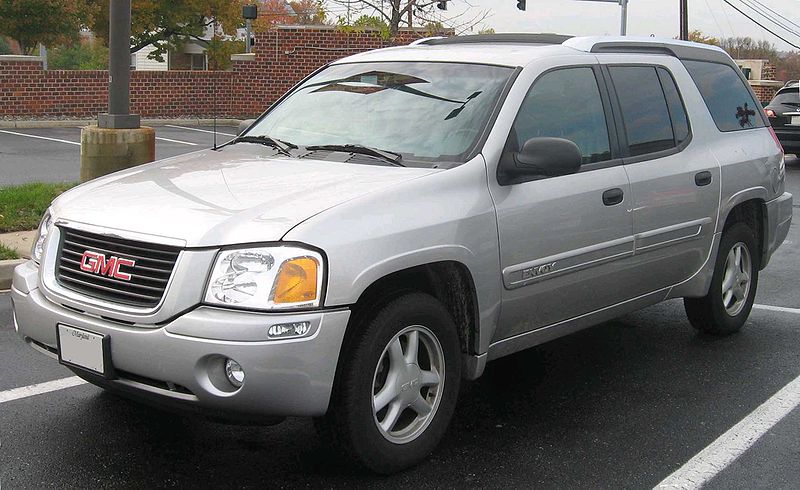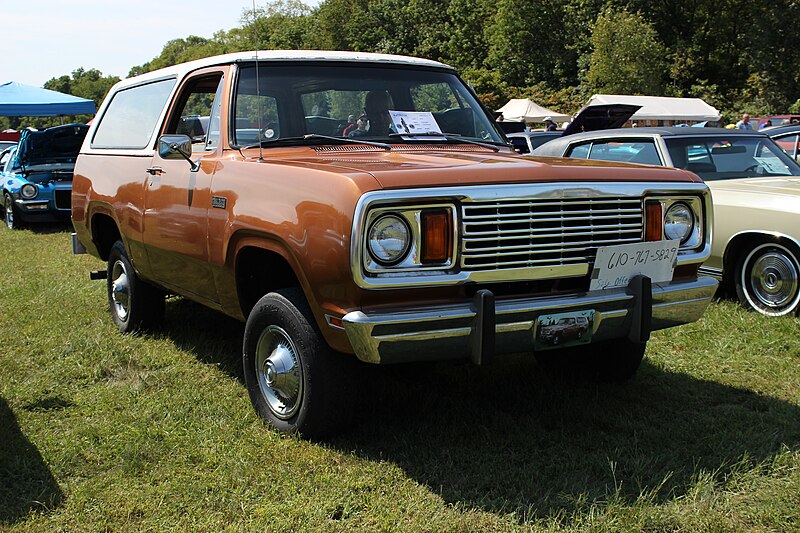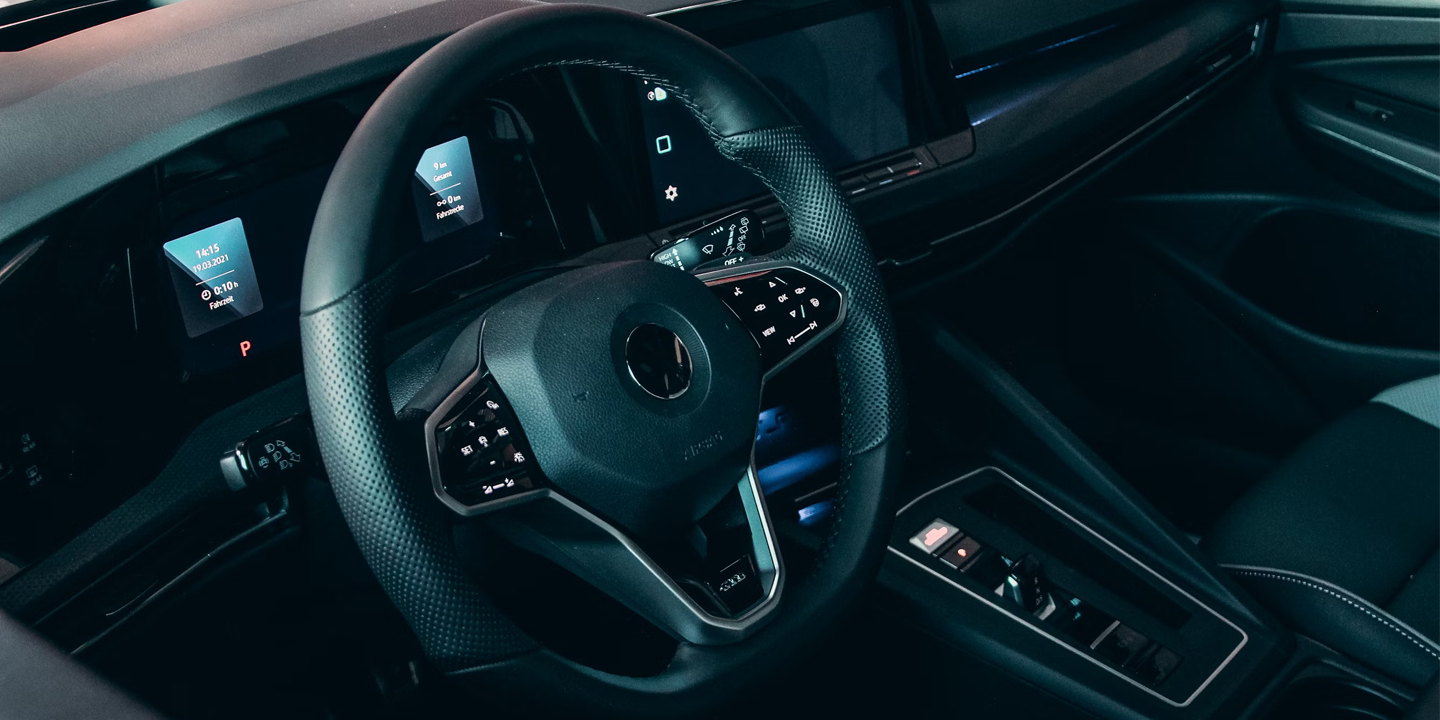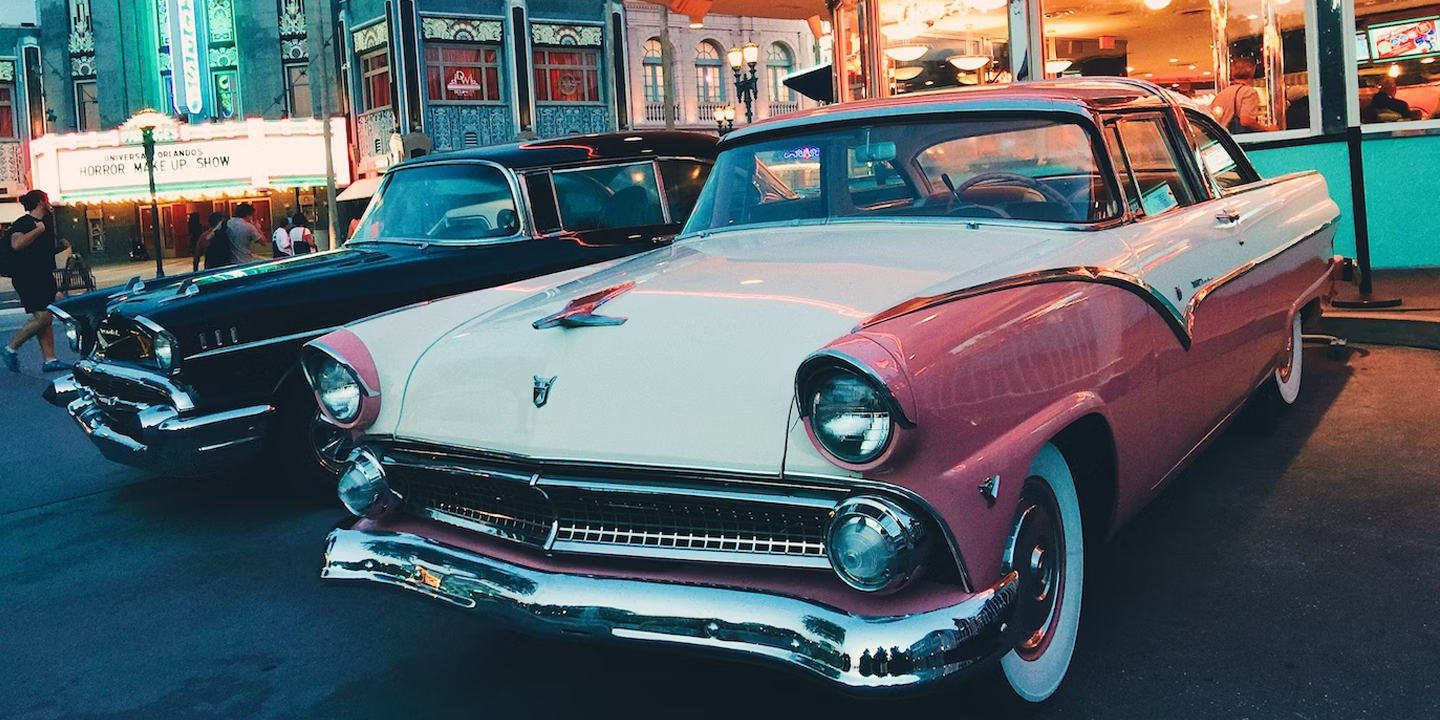Sports Utility Vehicles are more popular than ever, and that’s no surprise considering their ideal combo of affordability, functionality, and looks. In fact, SUVs outsold all other models of cars last year, selling over 30 million units in the United States alone. The list that follows can’t make the same claims of extraordinary sales. For a myriad of reasons, the SUVs below tanked hardcore—but in a way, that makes them pretty memorable.
40. Chevrolet Tahoe Hybrid
Chevrolet released the Tahoe Hybrid in the hopes of bridging the gap between the green-looking market and their “all-American” power-focused established customer base. The Tahoe Hybrid boasted all the features of the original Tahoe – plus an extra 350lbs of weight from the hybrid system. It was hard for the bulky hybrid to offer much mpg benefit over a standard engine, and the car was pulled off the market after only 6 years. Turns out you can’t have your cake and eat it too, Chevy.
39. Pontiac Aztek
Today, SUVs are a regular sight on city streets, but originally designs – and ads – focused mostly on off-roading abilities. The Aztek seemed poised to fill a major gap in the market. Unfortunately, basing the design off of GM’s minivan architecture resulted in a design that was awkward, dorky, and way off the mark for any stylish city driver.
38. Jaguar E-Pace
Jaguar’s first SUV, the F-Pace, was launched in 2012 and started a wave of success that rocketed the company volume in the Canadian market. This momentum wasn’t enough to overcome the drag from the disappointing E-Pace, which tanked so hard that fewer than 600 were sold in its launch year. Two years later, Jaguars on the road in Canada have dropped by more than a fifth.
 Johannes Maximillian via Wikicommons
Johannes Maximillian via Wikicommons
37. Land Rover Discovery Sport
The Discovery Sport is Land Rover’s least expensive SUV option – and, sorry guys, it feels like it too. Despite having more off-road abilities and greater options for seating, it just isn’t bringing people to the brand. Affordability isn’t enough to get out from under the luxury shadow of the Range Rover.
35. Cadillac Escalade
The Cadillac Escalade couldn’t ride on celebrity prestige forever. More and more consumers are seeing through the glitz, the flash, and the frankly alarming price point. Creeping up towards six figures with add-ons, this gas guzzler won’t help your wallet at the pumps either – it doesn’t haul its bulk around for better than 15 mpg.
 Joachim Kohler via Wikicommons
Joachim Kohler via Wikicommons
33. Mitsubishi Outlander
The Mitsubishi Outlander is affordable and has an excellent warranty… and that’s about it. Constantly ranked among the lowest of SUVs, it’s cramped, unreliable, and limps along with a three-cylinder engine and a feeble optional hybrid setup. Keep looking.
32. Honda Element
Even someone with no interest in cars can tell that this cubic monstrosity should never have hit the shelves. It looks ugly, runs ugly, and feels ugly to drive. It lasted eight years on the market – and that’s eight years too long.
31. Hummer H2
Introduced just after 9/11, the Hummer H2 was truly a product of its era. It was loud, bombastic, and thirsty for oil at the worst possible time. GM almost collapsed from the PR disaster that this SUV brought crashing down, and Time Magazine still considers it one of the worst cars of all time.
 Navigator84 via Wikicommons
Navigator84 via Wikicommons30. Daihatsu Rocky
Diahatsu hoped to latch onto the success of the Suzuki Samurai in the American market by launching their similar Rocky. Unfortunately, by the time their capable off-roader made landfall, the market had drifted towards models that highlighted size and luxury over compact capability. The Rocky just couldn’t match the power of the industry-leading Jeep Wrangler.
29. Land Rover Freelander SE3
Speaking of the Jeep Wrangler, another SUV that couldn’t compare was the Freelander SE3. Though the Land Rover Freelander had achieved a certain popularity, the 2003 release of a more stylized off-road version failed to impress. It was cramped, costly, and underpowered, and the whole line was discontinued for the US market in 2005.
28. Jeep Commando
There’s not a whole lot to say about the Jeep Commando. Released in the late 60s, it tried to bridge the gap between off-roader and pick-up truck, with a small truck bed instead of a back seat. Somewhere in the middle of upscale and practical, it ended up being all but forgotten in seven short years.
26. Honda Passport
Just like Acura, Honda wanted in on the SUV trend of the early 90’s, and fast. The Honda Passport was little more than an Isuzu Rodeo with a new logo (and a price point to match). While they managed to dodge a bullet by using a generally adequate model, it was an unremarkable entry into the market.
25. Suzuki Samurai
The Suzuki Samurai was huge in the late 1980s until an article in Consumer Reports claimed it was prone to roll-overs and deadly accidents. Though follow-up reports found little evidence to support the dramatic claims, Suzuki would end up in a 10-year lawsuit with the magazine. They settled out of court, but the brand was basically ruined, and Suzuki quickly pulled the model from the U.S. market.
24. Mahindra Thar
The Indian-build Mahindra Thar was based on old-school Jeep designs for maximum off-road capability. Unfortunately, a great recipe is still only as good as its ingredients. The Thar suffered from poor components, outdated mechanics, and low engine power – leading to overall bad performance in difficult terrain.
23. Alfa Romeo Stelvio Quadrifoglio
This one’s heavy on the sport, super light on the utility. The Stelvio Quadrioglio was made for power, speed, and shininess – none of your muddy off-roading here. All-wheel drive technically makes this an entry into the SUV class, but it’s little more than a fancy, turbocharged hatchback.
22. Dodge Raider
Dodge already had a solid entry into the SUV market with the Ramcharger when they decided to release this secondary model. Produced entirely in Japan and imported overseas, the Raider was basically a clone of the Mitsubishi Pajero. It handled fine and did everything it needed to but didn’t stand out, and it disappeared after two short years.
21. Nissan Patrol
Nissan originally designed the Patrol to compete with the FJ 40 Land Cruiser, targeting hard terrains and serious offroad use. It didn’t make much of a dent in the market, but it wasn’t a total loss. It was boxy but roomy, and tough enough that it was redesigned for style and mass appeal. In the end, Nissan rebranded it as the Armada and turned towards the luxury market.
20. Saab 9-4X
The Saab 9-4x only sold around 800 units – but to be fair, that’s all they ever made. The 9-4x was one of the last models made before Saab was closed by its parent company, GM. It was designed to be a luxury crossover and to be launched into the premium market. Instead, those last 800 cars have ended up being one of the rarest sights on the road.
19. Nissan Murano CrossCabriolet
The Nissan Murano CrossCabriolet was a small production line that was only on the market for three years and made serious waves with a new concept: the rag-top convertible SUV. This design aimed to combine the comfort and practicality of an SUV with the luxury feel of a convertible and the dependability of Nissan’s established brand. Unfortunately, criticism of its appearance and handling led Nissan right back to the drawing board.
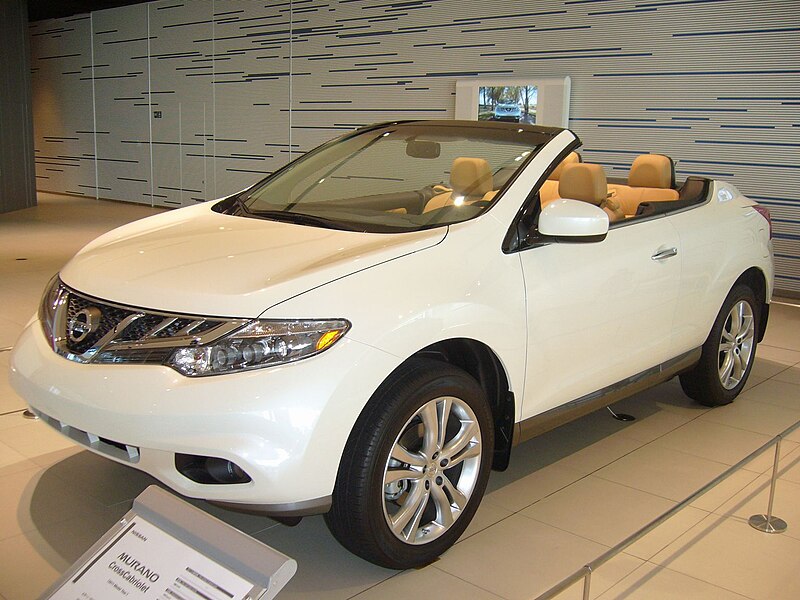 Ceficefi via Wikicommons
Ceficefi via Wikicommons18. Chrysler Aspen
Virtually identical to the Dodge Durango, Chrysler wanted to reach for the stars with the Aspen. They pushed the Aspen into direct competition with the likes of Cadillac and Lincoln by targeting high-end and luxury markets. Sadly, the Aspen couldn’t make a dent in those brands – but it’s still popular in the secondhand market for its huge 8-seat carrying capacity.
17. Suzuki XL7
Suzuki is another company that left the American market due to poor sales. One of the reasons was that it failed to position itself in the SUV market. Suzuki had much success in the ’90s with the Sidekick/Vitara models, but the follow-up versions weren’t so successful. The XL7 was one of Suzuki’s later attempts to stay competitive in the American market. Suzuki was never able to replicate the success of the Sidekick and, though notably roomy, the XL7 was no different. It wasn’t popular and, eventually, Suzuki would pull away from the US market entirely.
16. Lincoln Aviator
The Aviator was intended to be a luxury version of the Ford Explorer – and, well, that’s exactly what it was. It probably would have done fine if it weren’t for the massive cost. It looks like Ford decided that they could boost the luxury price point even higher, just for the Lincoln name, and call it a day. But as someone who knows cars once said, "No one's ever wanted a Lincoln."
15. Isuzu VehiCross
Seriously, how do you pronounce that? The VehiCross was strangely named and even more strangely designed. While Isuzu was aiming for “futuristic”, most consumers thought the vehicle was ugly and the sales numbers certainly reflected this. Despite being a capable off-roader with the best components and technology, the US sales were so slow that the company yanked it in 2001.
14. GMC Envoy XUV
While the GMC Envoy model has enjoyed success, the XUV was a major outlier. Expensive and heavy, the vehicle was designed to combine an SUV with a pickup truck and ended up with the worst parts of both. Despite the practicality of a fully-opening tailgate, customers reacted with a resounding “meh”.
13. Mazda Navajo
The Navajo was, in a word, unmemorable. It was a re-badged three-door Ford Explorer – Ford hoped to direct some sales to the Mazda brand. Despite the lasting popularity of the Explorer design, the Navajo just never made an impact.
12. Isuzu Axiom
In 2002, Isuzu introduced the Axiom into the crossover SUV market. It was a solid entry with competitive features and, unfortunately, a visual style that landed somewhere just left of “Mom’s minivan”. With classic, truck-based SUVs proving to be the longer lasting preference of consumers, Isuzu killed the Axiom after only three years.
 Thomas Doerfer via Wikicommons
Thomas Doerfer via Wikicommons
11. Suzuki X-90
The Suzuki X-90 might be the most bananas concept on this list. The X-90 is an extremely compact two-door and two-seater SUV – and yes, it looks just as weird as you think. It was so small that choosing the all-wheel-drive model significantly reduced the interior and trunk space. While the model sold decently in America, car consumers and critics alike remained confused by the strange design.
10. Kia Borrego
The Borrego certainly suffered from poor timing. Kia introduced this powerful luxury SUV into the market in 2009… right as the recession began. Even though it was one of the less expensive luxury models in its class, it just wasn’t good enough to warrant the price point, and reviews were unforgiving.
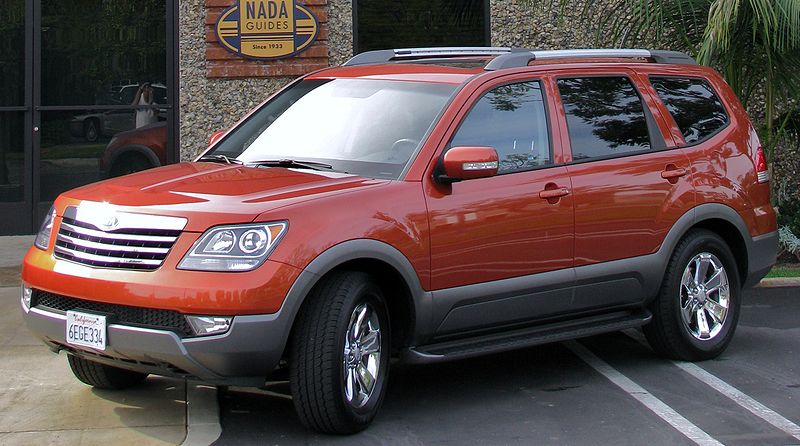 Thomas Doerfer via Wikicommons
Thomas Doerfer via Wikicommons
8. Acura ZDX
The Acura ZDX was an attempt to combine a sedan, a crossover, and an SUV – and managed to live up to none of them. Customers were unable to see past the ugly, strange design and Acura barely passed 7,000 sales before disappearing it from the market. Despite some smart, solid choices regarding layout and features, it just didn’t live up to Acura’s reputation for elegance and luxury.
7. Plymouth Trailduster
After the success of the Dodge Ramcharger in the 70s, the Trailduster was Plymouth’s companion entry into the SUV market. It was identical to the Ramcharger in everything but the details, and offered a lower price for all-wheel drive. However, the market never really responded to the Trailduster and, after a few years, they pulled to model to focus on the Ramcharger instead.
6. Dodge Nitro
The Dodge Nitro, though it looks tough, feels like the dollar-store version of an SUV. It was criticized on release for its cramped interior, cheap materials, and lack of power and performance. Models like this have contributed to a public perception of Dodge as a maker of poor-quality products, and it’s not hard to see why.
 Reelcheeper via Wikicommons
Reelcheeper via Wikicommons5. Jeep Compass
The Jeep brand has a pretty distinct silhouette in the market. It’s all about those straight lines and boxy corners! So we have to wonder why, as an industry leader, Jeep decided to toss that aside for the almost cuddly-looking Compass. Add to that an underperforming engine block and shoddy finish, and it’s no wonder the Compass was roundly dismissed as an experiment not worth repeating.
4. Nissan Juke
When it comes to function, the Nissan Juke was a decent, compact, urban car. Unfortunately, while fine on the inside, the Juke was panned by critics for its appearance. Lumpy, bumpy, and squishy-looking, even its popularity among younger drivers couldn’t save it from the chopping block.
3. Fiat 500X
The original Fiat 500 model is compact in size and spirit – it’s cute, but every inch packs a punch. So it makes sense that attempts to size it up end up sluggish and dull. Even though it’s no bigger than a compact SUV, the Fiat 500X feels flabby, drives boring, and isn’t worth the amount you pay for the Fiat name.
 Heranderssvensson via Wikicommons
Heranderssvensson via Wikicommons
2. Mercedes EQC
The latest electric SUV from Mercedes so underperformed in presales that it was thought it might never make it onto the road at all. It’s a perfectly capable car and very well-equipped, but it just doesn’t look or feel like a Mercedes. And at upwards of $68,000 a pop, maybe there is a limit to how much people will pay for the name brand alone.
1. Ford Flex
Honestly, it’s a shame the Ford Flex hasn’t sold as well as Ford hoped it would. It managed to combine the best features of both an SUV and a station wagon, with loads of interior space, impressive engines, and optional all-wheel drive. The market never seemed to latch onto the retro-styled model, and though Ford kept manufacturing them for a decade, they killed the Flex in 2019.





